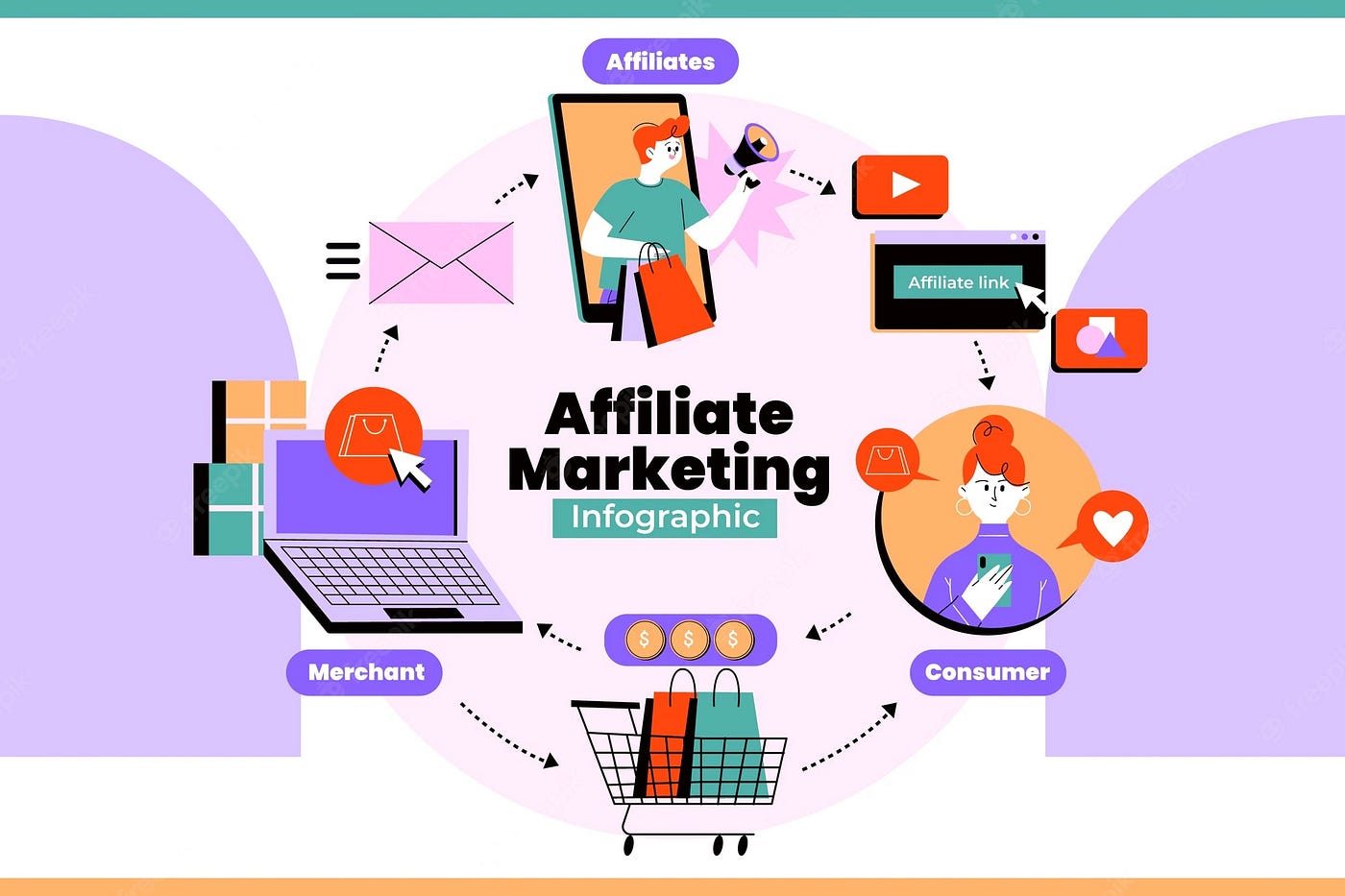Driving traffic to affiliate links is crucial for earning commissions. The more people click, the higher your potential earnings.
Affiliate marketing can be challenging without the right strategies. You need to know how to attract visitors effectively. This blog will help you understand proven methods to drive traffic to your affiliate links. Whether you’re new to affiliate marketing or looking to boost your current efforts, learning these strategies will benefit you.
We will cover various techniques that work well, from social media to content marketing. Ready to increase your traffic and commissions? Let’s get started!

Credit: hustlelife.net
Content Marketing
Content Marketing is a powerful way to drive traffic to your affiliate links. By creating valuable content, you attract and engage your audience. This method helps build trust and credibility. Let’s dive into two effective content marketing strategies: Blog Posts and Guest Blogging.
Blog Posts
Writing blog posts is a great way to share affiliate links. Create content that solves problems or answers questions. Use clear and simple language. Include your affiliate links naturally within the content. Focus on providing value to your readers.
Use SEO techniques to optimize your blog posts. Research keywords related to your niche. Include these keywords in your titles, headings, and content. This helps your blog rank higher in search engine results. Higher rankings mean more traffic.
Regularly update your blog with fresh content. Consistency keeps your readers coming back. It also signals search engines that your site is active. Both factors can increase traffic to your affiliate links.
Guest Blogging
Guest blogging involves writing posts for other blogs. This helps you reach a wider audience. Choose blogs that align with your niche. Ensure the blog has a good readership. This increases the chances of your content being seen.
Write high-quality guest posts. Provide valuable information to the readers. Include your affiliate links in a natural way. This builds trust with the new audience. They are more likely to click on your links.
Build relationships with other bloggers. This can lead to more guest posting opportunities. It also helps in networking within your niche. Strong relationships can boost your credibility and traffic.
Social Media
Social media offers a dynamic way to drive traffic to affiliate links. With billions of users worldwide, platforms provide an excellent opportunity to reach diverse audiences. Leveraging these platforms effectively can significantly boost your affiliate marketing efforts.
Platforms To Use
Choosing the right social media platforms can make a big difference. Facebook, Instagram, Twitter, and Pinterest are popular choices for promoting affiliate links. Each platform has its unique strengths. Facebook allows you to join groups and interact with communities. Instagram is perfect for visual content and stories. Twitter helps with real-time engagement. Pinterest drives traffic through visually appealing pins.
Engagement Strategies
Engagement is key to successful affiliate marketing on social media. First, provide valuable content to your audience. Share tips, reviews, and tutorials related to your affiliate products. Make your posts interesting and informative. Second, interact with your followers. Respond to their comments and messages promptly. Show them that you care about their opinions.
Third, use eye-catching visuals. High-quality images and videos grab attention. They encourage users to click on your links. Fourth, create compelling calls to action. Ask your audience to click on the link, visit your blog, or check out the product. Lastly, be consistent. Regularly post and share content to keep your audience engaged. This builds trust and encourages more clicks on your affiliate links.
Email Marketing
Email marketing is a powerful tool to drive traffic to your affiliate links. It allows you to reach your audience directly in their inboxes. By creating valuable content, you can build trust and encourage clicks on your links.
Building An Email List
Start by building a strong email list. Offer something valuable in exchange for email addresses. This could be a free eBook, a discount, or a helpful guide. Ensure your offer aligns with your niche. Place signup forms on your website. Use pop-ups and exit-intent forms. Promote your offer on social media and through blog posts.
Crafting Effective Emails
Crafting effective emails is crucial. Write catchy subject lines to grab attention. Keep your emails short and to the point. Use clear and simple language. Include a strong call to action. Make it clear what you want your readers to do. Use engaging visuals and relevant images. Ensure your emails are mobile-friendly. Test your emails before sending. Analyze open rates and click-through rates. Adjust your strategy based on the results.
Seo Techniques
Driving traffic to affiliate links requires a smart SEO strategy. This will help your content rank higher on search engines. The higher the rank, the more visitors you get. Let’s explore some essential SEO techniques.
Keyword Research
Keyword research is the first step in any SEO strategy. Use tools like Google Keyword Planner or Ahrefs. These tools help you find high-volume, low-competition keywords. Choose keywords that are relevant to your affiliate products.
Here are some tips for effective keyword research:
- Identify long-tail keywords. They are less competitive.
- Focus on search intent. Understand what users are looking for.
- Analyze your competitors. See what keywords they are targeting.
Consider using a table to organize your keywords:
| Keyword | Search Volume | Competition |
|---|---|---|
| best running shoes | 10,000 | Medium |
| affordable running shoes | 5,000 | Low |
On-page Optimization
On-page optimization involves improving various elements on your webpage. This helps search engines understand your content better.
Key aspects of on-page optimization include:
- Title Tags: Include your primary keyword in the title. Make it catchy.
- Meta Descriptions: Write a brief, enticing description. Use your main keyword.
- Headings: Use
,, andtags. Structure your content well. - Content: Write engaging content. Use keywords naturally. Avoid keyword stuffing.
- Internal Links: Link to other pages on your site. This helps with navigation.
- Alt Text: Add descriptive alt text to images. Use keywords where appropriate.
Here’s an example of optimized HTML code:
Best Running Shoes for 2023
Looking for the best running shoes in 2023? We've got you covered.
Top 5 Running Shoes
Here are the top 5 running shoes you should consider...

Effective on-page optimization can significantly improve your search rankings. This brings more traffic to your affiliate links.
Paid Advertising
Paid advertising is a powerful way to drive traffic to affiliate links. By spending money on ads, you can reach a larger audience. This method can provide quick results. It is especially useful for new affiliates. There are several ways to use paid ads effectively.
Google Ads
Google Ads can help you target specific keywords. This makes your links visible to people searching for related products. Create compelling ad copy. Include the keywords your audience is searching for. Be sure to set a budget. Monitor your ads regularly. Adjust your strategy based on performance. This ensures you get the best return on investment.
Social Media Ads
Social media ads are another great option. Platforms like Facebook, Instagram, and Twitter offer targeted advertising. You can reach specific demographics based on interests and behaviors. Create eye-catching visuals. Use engaging text. Make sure your ads stand out in users’ feeds. Track the performance of your ads. Use insights to improve future campaigns.
Influencer Partnerships
Influencer partnerships can significantly boost traffic to affiliate links. Influencers have loyal followers who trust their recommendations. Collaborating with the right influencers can lead to higher engagement and conversions.
Finding The Right Influencers
Identifying the right influencers is crucial. Look for influencers who align with your niche. Tools like BuzzSumo and Upfluence can help you find suitable candidates.
Consider the following criteria when selecting influencers:
- Relevance: Do they share content related to your niche?
- Engagement: How active are their followers?
- Authenticity: Do they have genuine interactions?
Analyze their social media profiles. Look at their followers and engagement rates. Ensure they have a real audience that matches your target market.
Negotiating Collaborations
Once you find the right influencers, start negotiating collaborations. Be clear about your expectations. Discuss the type of content they will create.
Consider these key points during negotiations:
| Aspect | Details |
|---|---|
| Compensation | Decide on payment terms. This can be a flat fee or commission-based. |
| Content Type | Specify if you want blog posts, social media posts, or videos. |
| Timeline | Agree on deadlines and posting schedules. |
Maintain open communication throughout the process. Ensure both parties are on the same page. This will lead to a successful partnership.
Analyzing Performance
Analyzing performance is crucial for driving traffic to your affiliate links. Understanding how your strategies are working helps you make informed decisions. This section will guide you through tracking metrics and adjusting strategies.
Tracking Metrics
Tracking metrics provides insights into how your affiliate links are performing. Use tools like Google Analytics to monitor traffic. Pay attention to metrics such as click-through rates, conversion rates, and bounce rates. These metrics tell you how users interact with your links.
Regularly review your data. Look for patterns and trends. Identify which links are performing well and which are not. This information helps you understand what works best for your audience.
Adjusting Strategies
Adjusting strategies based on your metrics is key. If a link has a low click-through rate, try changing its placement. Experiment with different anchor texts. Test various call-to-action phrases.
If conversion rates are low, review your content. Ensure it aligns with the affiliate product. Provide clear and concise information. Make it easy for users to make a decision.
Continuously tweak your strategies. Small adjustments can lead to significant improvements. Keep experimenting and learning from your data.

Credit: medium.com

Credit: www.clickbank.com
Frequently Asked Questions
How Can I Promote Affiliate Links For Free?
You can promote affiliate links for free by leveraging social media platforms, starting a blog, or creating engaging content on YouTube. Utilizing SEO and email marketing can also drive organic traffic.
What Are The Best Platforms For Affiliate Marketing?
The best platforms for affiliate marketing include websites, blogs, social media channels, and YouTube. Choose platforms where your target audience is active.
How Do I Increase Clicks On Affiliate Links?
To increase clicks on affiliate links, create high-quality content that resonates with your audience. Use eye-catching call-to-actions and ensure your links are relevant and valuable.
Can Seo Help Drive Traffic To Affiliate Links?
Yes, SEO can significantly help drive traffic to affiliate links. Optimize your content with relevant keywords and ensure your website has a good user experience.
Conclusion
Driving traffic to affiliate links requires strategy and patience. Consistent content creation helps. Utilize social media to share your links. Engage with your audience genuinely. Always provide value in your promotions. Optimize your content for search engines. Use keywords naturally.
Monitor your results and adjust tactics as needed. Stay updated with trends in affiliate marketing. Test different approaches to find what works best. Building trust with your audience is key. With dedication, you’ll see results over time. Keep refining your methods for ongoing success.
1 thought on “How to Drive Traffic to Affiliate Links: Top Strategies Revealed”